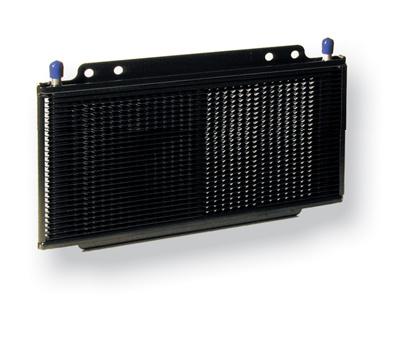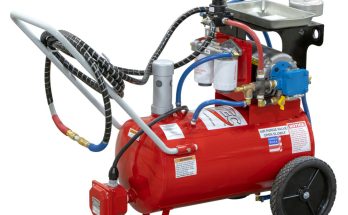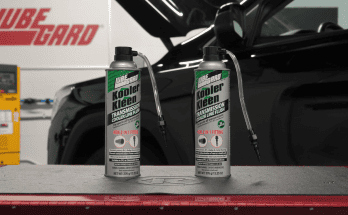Transmission coolers help allow your vehicle’s transmission stay at the right temperature under normal driving conditions. But what if it fails? Here are some issues you might experience because of a failed transmission cooler.
Transmission Cooler Failure Symptoms
When a transmission cooler fails, there will be a handful of noticeable symptoms, many of which will cause transmission failure if not taken care of quickly enough.
The most common transmission cooler failures are due to either a leak in the body of the cooler itself, or a clogged line caused by something flowing through the system. This most likely is from the transmission itself. If left unattended, the transmission will run low on atf which will increase the fluid temperature and cause premature failure.
Transmission Line Leak
One of the most obvious transmission cooler failure or blown transmission line symptoms is a leak. When a line leaks, there will be transmission fluid on the ground near where the leak is coming from. If you simply notice that a line is leaking, that can be a simple fix depending on the location of the leak and line itself.
Depending on the transmission cooling system routing, it is not too uncommon to have the transmission cooler lines leaking at the radiator if the lines are starting to rust.
When in good condition, transmission fluid is a very bright red, so it is very easy to notice on most surfaces.
The below chart shows the colors transmission fluid will be based on how good it is.
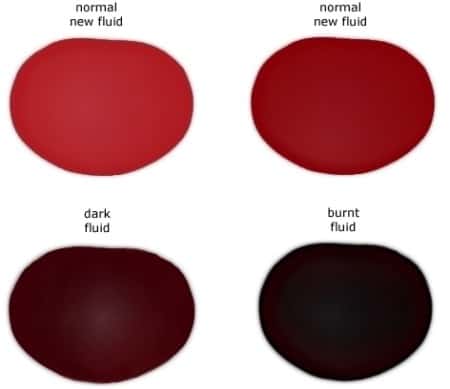
Noises Or Poor Transmission Performance
If your transmission cooler or line has been leaking, the fluid levels will be lower. This will cause your transmission to have very poor performance.
This is the most noticeable signs of low transmission fluid Transmission fluid levels are critical when it comes to how your car shifts. Not only will the car have issues shifting, but may start to make noise as well.
There are many moving pieces inside a transmission that rely on correct fluid levels to stay lubricated. Lack of fluid will create more noise as things are moving around.
Transmission Fluid In Radiator
With the factory transmission cooler located in the radiator, there is the possibility for the cooler to fail and ultimately leak out transmission fluid.
This leads to not only transmission issues, but causes a massive headache within your engine’s cooling system as well. In this case, transmission fluid and coolant / anti-freeze will mix and create a strawberry milkshake looking fluid that will contaminate both systems.
If this were to occur, not only is it difficult to clean, but can lead to expensive repairs including:
- Complete transmission rebuild or replacement
- Transmission cooling line flush
- Radiator & cooling system flush
- Radiator replacement
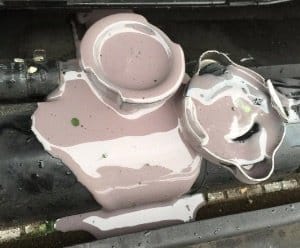
Transmission Temperature Increase
Another obvious sign that your transmission cooling system has an issue is an increase in fluid temperature. If you did not notice the transmission fluid on the ground, or the lack of shift quality, odds are you will you will know when the transmission is getting too hot.
This can be one of the most noticeable clogged transmission cooler symptoms. Since the cooler’s job is to flow trans fluid to lower temps, if there is a clog in the cooler, the fluid may not be able to flow properly, which would result in overheating the fluid.
The most obvious symptom of extreme transmission temperatures is the smell of something burning. This would be the most common signs that a transmission is going bad.
Like mentioned before, the internal components of a transmission require the right about of fluid to stay lubricated, but this helps keeps things cool as well. Once your transmission temperatures start to exceed 225, you will start to greatly reduce its lifespan.
In the transmission temperature chart below, you can see how long your transmission will live at various temperatures.
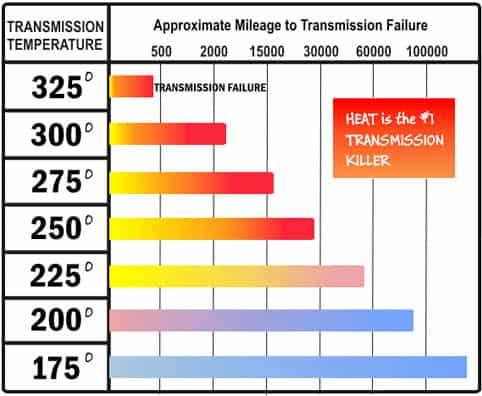
Heat is the number one killer of transmissions, so it is important to keep temperatures as low as possible.
How To Fix A Bad Transmission Cooler
The only way to fix a bad transmission cooler or line is to replace it. Since the factory transmission cooler is typically found within the radiator, this means the whole radiator will have to be replaced as well.
If this is the case, it is highly recommended to perform a full coolant flush to ensure no ATF got into the cars cooling system.
Transmission Cooler Replacement Cost
If your vehicle needs its transmission cooler replaced, this can cost anywhere from $50 to install a transmission cooler yourself to upwards of $500 to have a mechanic do it for you, especially if you have to replace the radiator with internal cooler.
If you have an external transmission cooler that needs to be replaced, this is less labor intensive and much cheaper than replacing the whole radiator.
Fixing a bad transmission cooler will not only save you a headache, but potentially thousands of dollars that are needed to replace your failed transmission.
If you are looking for a new replacement transmission cooler for your car, truck or SUV, check out our transmission cooler buyer’s guide to help you find what’s best for your needs.

